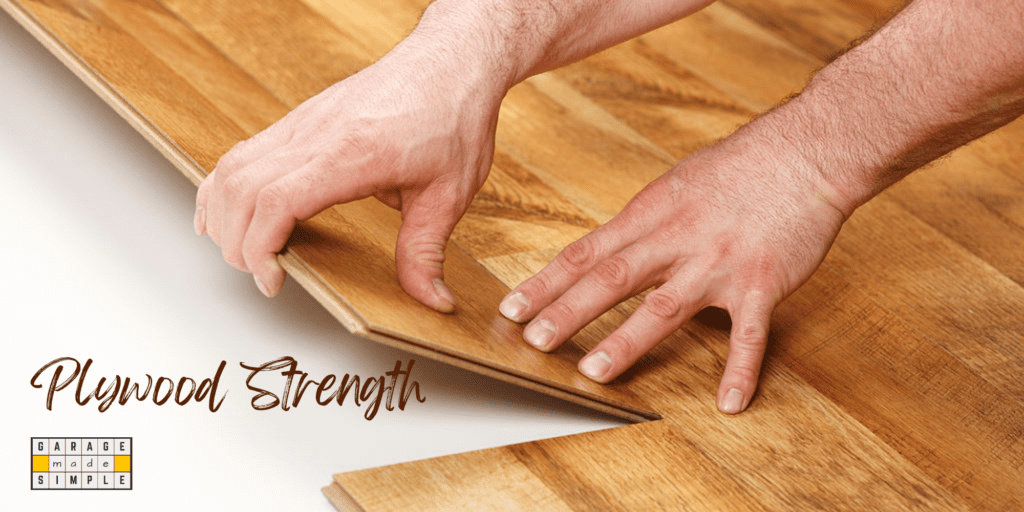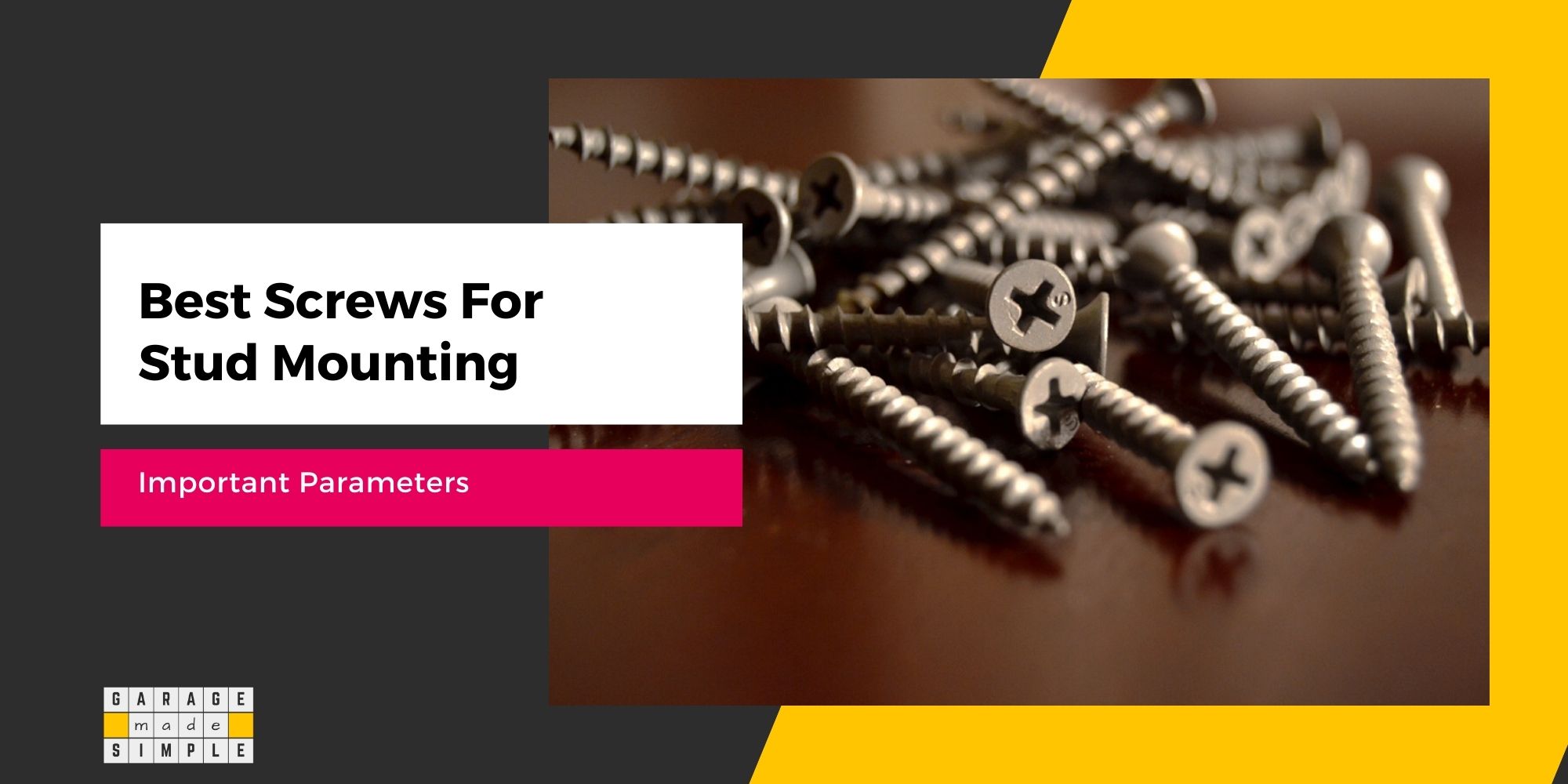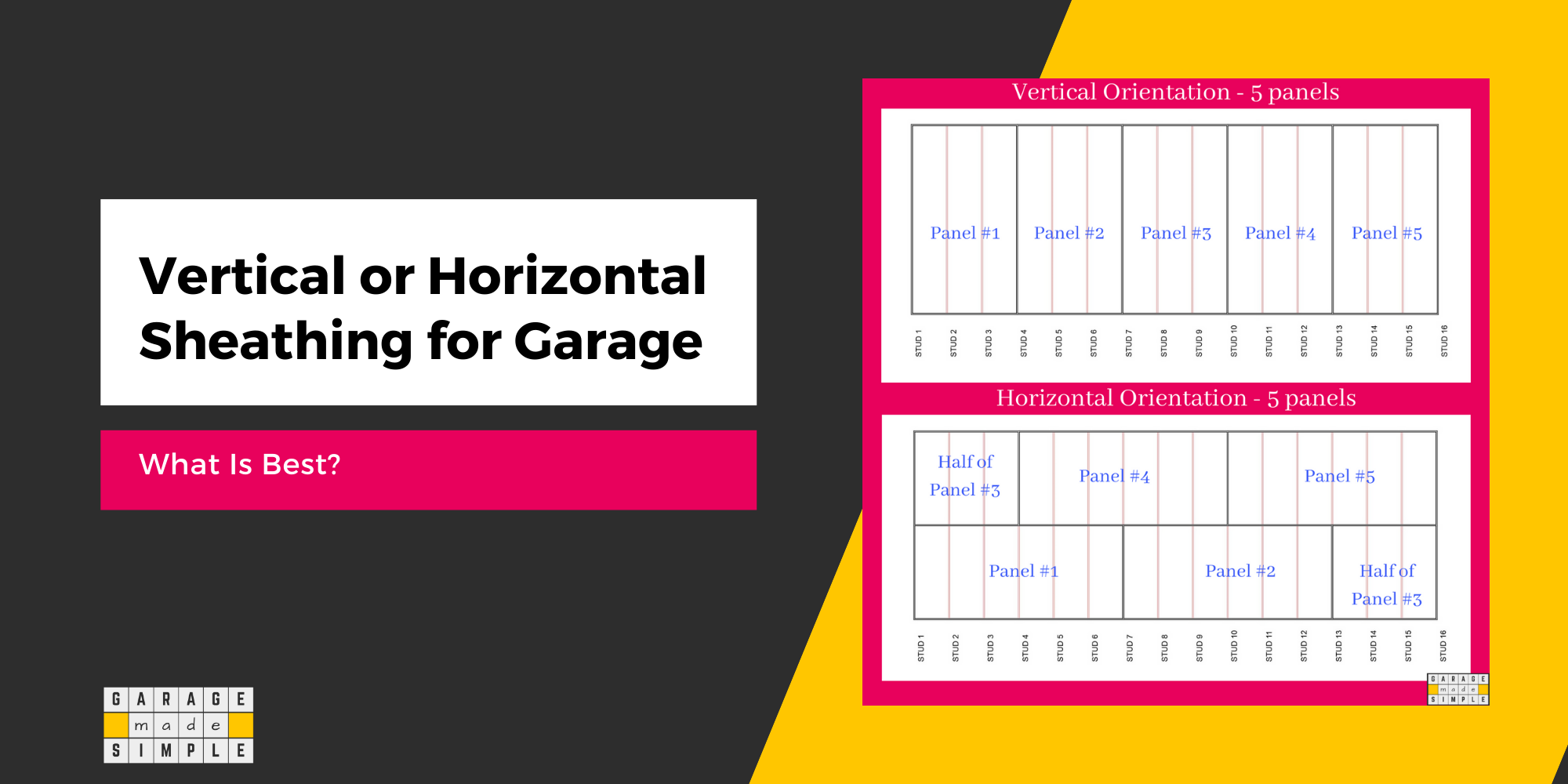Importance of Plywood Strength in Garage Construction
garagemadesimple.com is a participant in the Amazon Services LLC Associates Program, an affiliate advertising program designed to provide a means for sites to earn advertising fees by advertising and linking to Amazon.com . The website is also an affiliate of a few other brands.
You may be surprised to know that plywood strength, quite often, is even higher than solid wood of the same species and thickness. The secret lies in how plywood is manufactured. Plywood is engineered wood composed of thin layers of wood veneer (ply) glued together with alternating grain directions.
No wonder, plywood is widely used in home construction, especially in detached garages. Compared to solid wood, plywood is not only more affordable, it also offers superior strength, stability, and resistance to warping and cracking.

Plywood Strength: The Cornerstone of Garage Construction
Plywood finds varied uses in detached garage construction. High plywood strength makes it an ideal choice for interior paneling and exterior cladding of garage walls, garage roofing and garage flooring. In addition it is widely used in garage storage, workbenches, etc. too!
What makes plywood unique is its comparable strength on both axis. This is no doubt because of the fact that the grains of each ply are oriented perpendicular to the adjacent plies.
Plywood strength is typically more than adequate to withstand demanding loads and extreme environmental conditions that a detached garage faces.
Plywood is versatile in design and functionality. Its smooth surface can be painted, stained, or left natural. Plywood is easy to cut and install on all types of surfaces.
Plywood strength plays an important role in the safety and stability of detached garages in areas prone to extreme weather events.
The right choice of plywood thickness and number of plies enables garage walls to resist high winds and seismic forces.
Similarly high plywood strength helps garage roofs to withstand snow build up and garage floors to take on the weight of heavy vehicles.
Plywood Strength: What Does it Really Mean?
Strength is a general term that refers to the ability of a material to withstand external forces without deforming or failing. In the context of sheathing materials, such as plywood, strength is typically measured in pounds per square inch (psi).
Modulus of rupture (MOR) is a measure of a material’s strength before it ruptures. It’s also known as the tensile strength or bending strength of a material. It is measured in psi.
Plywood Strength Chart
| Strength | In (psi) |
|---|---|
| Modulus of Rupture (MOR) | 7,000 – 10,000 |
| Compressive Strength | 4,500 – 6,000 |
| Tensile Strength | 4,000 – 5,000 |
| Shear Strength (Rolling) | 250 – 300 |
| Shear Strength (Edgewise) | 800 – 1,000 |
Tensile Strength
Tensile strength is the ability of a material to resist forces that pull it apart. For plywood, tensile strength is typically measured in the direction parallel to the grain of the wood veneers.
High plywood tensile strength is essential for garage roofs and doors, which must withstand tension from wind loads and impact forces.
Plywood with higher tensile strength can better resist tearing and splitting.
Shear Strength
Shear strength is the ability of a material to withstand forces that push it sideways along its grain direction. It is typically measured in pounds per square inch (psi).
High plywood shear strength is required for garage framing members and storage shelves. Plywood with higher shear strength can better resist deformation and racking.
Flexural Strength
Flexural strength is the ability of a material to withstand bending forces. For plywood, flexural strength is typically measured in the direction perpendicular to the grain of the wood veneers.
When it comes to plywood strength, we need to know each type of strength. Different detached garage applications require different types of strengths to come into play.
Compressive Strength
Compressive strength is the ability of a material to resist forces that push it together. For plywood, compressive strength is typically measured in the direction perpendicular to the grain of the wood veneers.
Compressive strength is important for garage roofs and flooring, which must support the weight of snow buildup and vehicles.
Plywood with higher compressive strength can handle greater loads without buckling or collapsing.
Plywood is a strong and durable material that has good compressive, tensile, shear and flexural strength, making it a popular choice for sheathing applications.
Are Plywood Strength & Plywood Grade Related?
Plywood strength and plywood grade do not have a direct correlation. Plywood is categorized into various grades based on its appearance and the quality of its veneers.
Plywood grade is useful in selecting plywood for a specific application from the standpoint of visual appeal.
Having said that, generally speaking a high grade plywood will be stronger than a lower grade plywood, provided other factors such as plywood thickness and number of plies are the same.
A-Grade Plywood
A-grade plywood is the highest quality plywood available. It has smooth, uniform faces with minimal knots or defects. Needless to mention, it is the most expensive grade.
A-grade plywood is ideal for applications, such as interior paneling or garage doors, where appearance is very important.
B-Grade Plywood
B-grade plywood offers a balance between quality and affordability. Its faces may have some minor imperfections, such as small knots or repaired veneer patches.
While not as visually appealing as A-grade, B-grade plywood is still suitable for various garage applications, including interior walls and flooring.
C-Grade Plywood
C-grade plywood is an economical choice for applications where appearance is not a major concern. Its faces may have larger knots, voids, or repaired patches.
Despite these imperfections, C-grade plywood is still structurally sound and can be used for non-exposed areas of garages, such as framing or subfloors.
D-Grade Plywood
D-grade plywood is the lowest grade of plywood, featuring faces with significant defects, such as large knots, voids, and repaired patches.
While it is the most economical option, D-grade plywood is not recommended for structural applications due to its reduced strength and durability.
Factors Affecting Plywood Strength
Plywood strength is influenced by several factors of which the following are the most important.
Number of Plies
The number of plies, or layers of veneer, directly impacts plywood strength. All other things being the same, plywood with more plies will have higher strength, thickness and structural stability.
The alternating grain directions of the adjacent plies enhances the material’s resistance to stress and deformation. The more the number of plies, greater is the stiffness and its resistance to flexural stress.
From numerical analysis on hybrid composite specimens with different ply, it is seen that the strength of the hybrid composite depends on the ply number. The more ply the more strength.
IOPSCIENCE
Plywood Thickness
Plywood thickness, which is related to but not directly proportional to the number of plies, also plays a significant role in determining plywood strength.
Studies have determined that the plywood bending strength increases with plywood thickness, but only up to a point. Beyond that the bending strength may actually decline.
As a result, you should find the optimum plywood thickness, when it comes to structural applications, such as garage walls and flooring.
Wood Species
The type of wood used to make plywood veneers also influences its strength. Hardwoods, such as birch, maple, and oak, generally produce stronger plywood than softwoods, such as pine and spruce.
This is due to the denser and more resilient nature of hardwood fibers. However, hardwood plywood sheets are more difficult to install as they are heavier and more difficult to cut.
Grain Direction
The orientation of the grain within the plywood veneers affects its strength properties.
Plywood with alternating grain directions, where the grain of each ply runs perpendicular to the grain of the adjacent plies, is stronger than plywood where the grain direction is not exactly perpendicular.
Thus, plywood with alternatively perpendicular grain direction is considered the strongest among all types of plywood.
THEPLYWOOD
Adhesive Used
The type of adhesive used to bond the plywood veneers together is very important and influences plywood strength and durability.
High-quality adhesives, such as phenolic resin, melamine-formaldehyde resin or urea-formaldehyde resin, form strong bonds between the veneers, preventing delamination under high humidity and bending stress.
Manufacturing Process (Pressure, Temperature)
After the veneers are glued together they are placed in a hot press. The sheets are baked in the press at a temperature of at least 284 °F (140 °C), and at a pressure of up to 280 psi (1.9 MPa), (but more commonly 200 psi) to form the plywood panel.
Proper application of pressure and temperature during the pressing process ensures that the adhesive forms strong bonds and that the veneers are tightly bonded together.
The manufacturing conditions under which plywood is produced definitely has an impact on plywood strength.
How Much Weight Can Plywood Hold?
The weight that plywood can support is expressed in pounds per square foot (psf).
Factors Affecting Plywood Weight Capacity
The plywood weight capacity depends on several factors, as under:
- Thickness: Thicker plywood, in general, will have a higher weight capacity than thinner plywood.
- Density: Plywood made from denser wood species, in general, will have a higher weight capacity than plywood made from less dense wood species.
- Span: The longer the span of a piece of plywood, the less weight it can support.
- Type of plywood: There are several different types of plywood, each with its own weight capacity properties.
Plywood Weight Capacity
In general, thicker and heavier plywood can hold more weight than thinner and lighter plywood.
- A 1/4″ sheet of softwood plywood can support about 5psf.
- A 1/2″ sheet of softwood plywood can support about 35psf.
- A 3/4″ sheet of softwood plywood can support about 80psf.
- A 1″ sheet of softwood plywood can support about 160psf.
Plywood-covered joist-supported floors are typically rated for 10 or 20psf of dead load and a live load of 30 to 40psf. This translates into a total load capacity between 40 and 60psf.
Increasing Plywood Weight Capacity
Here are a few ways of increasing plywood weight capacity:
- Adding bracing: Adding bracing to plywood can help to increase its load-bearing capacity.
- Using thicker plywood: Using thicker plywood will also help to increase its load-bearing capacity.
- Using high-quality plywood: High-quality plywood is generally stronger than low-quality plywood.
Plywood Load Capacity Calculator
There are several plywood load capacity calculators available online. These calculators can help you to determine the weight capacity of a specific piece of plywood based on its thickness, span, and type.
Thank you very much for reading the post. I do hope you found it informative and useful.







